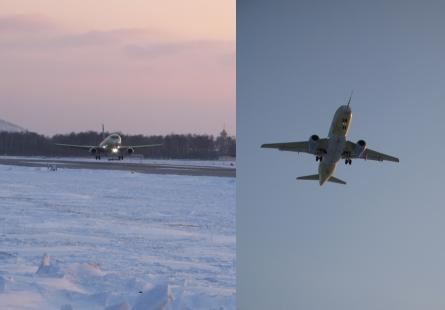Sukhoi has carried out the first flight of its second Superjet 100 test aircraft, days after a new phase of airborne trials of its PowerJet SaM146 engines began.
The second aircraft, number 95003, departed Komsomolsk-on-Amur for a 2hr 30min flight and operated to a height of 6,000m (19,700ft).
PowerJet partner NPO Saturn says the test enabled the pilots to validate aerodynamic stability and control of the regional jet.
Test pilot Leonid Chikunov says control software for the aircraft has undergone a number of changes following tests of the first flying example, which started in May. He states that the aircraft has already shown evidence of improvements as a result.
 |
|---|
© Sukhoi |
Senior test pilot Alexander Yablontsev adds: "We have a responsibility to ensure that, in critical situations, the aircraft will remain manageable."
Aircraft 95001, the first flying airframe, has already logged over 200hr in the air. In November it began undergoing the first high angle-of-attack and stall tests.
"The aircraft behaves very predictably," says Yablontsev.
Sukhoi's certification test regime for the Superjet will include assessing high- and low-temperature operations, and performance from high-altitude airports.
On 19 December the SaM146 engines began a second phase of flight tests on an Ilyushin Il-76 test-bed aircraft.
This series of tests, lasting 150hr, will notably assess engine thrust management and the full-authority digital engine control software.
While the second test phase had originally been due to take place at Istres in France, NPO Saturn says that its PowerJet partner, Snecma, has agreed to their taking place at the Zhukovsky centre outside Moscow in order to save time and costs.
European certification for the SaM146 is planned for September next year.
Source: Air Transport Intelligence news























